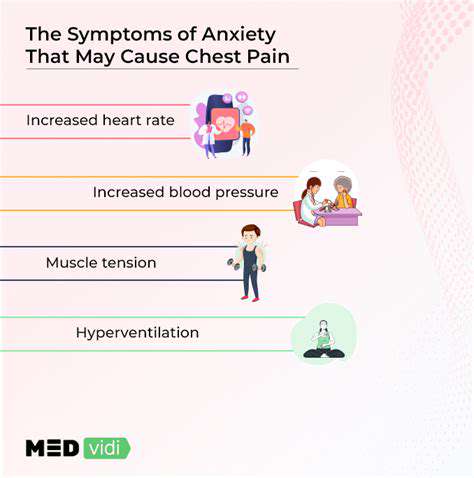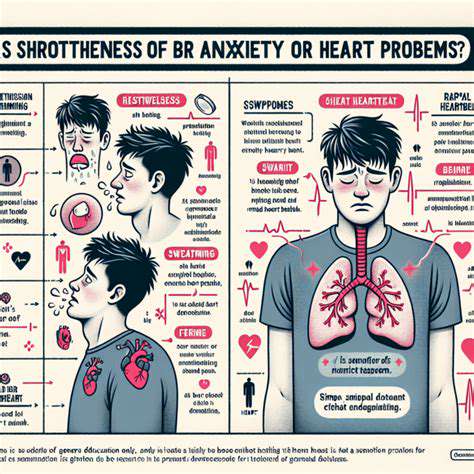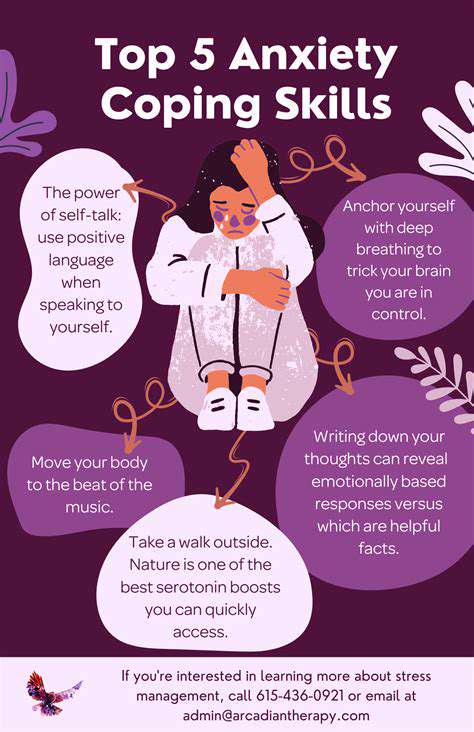Exploring the Connection Between Anxiety and Chest Pain
What is the Connection Between Anxiety and Chest Pain?

Understanding Anxiety
Anxiety represents our body's natural alarm system, activating when we perceive potential threats. This complex emotional state manifests through both psychological unease and tangible physical reactions like accelerated heart rate or shallow breathing. While moderate anxiety serves an evolutionary purpose by heightening alertness, its chronic form can profoundly disrupt normal functioning. The key to effective management lies in recognizing personal triggers and response patterns.
Physical manifestations often provide the most noticeable indicators of escalating anxiety. These may include perspiration, involuntary muscle movements, or respiratory difficulties, coupled with emotional symptoms like persistent apprehension or sudden irritability. Documenting these occurrences helps establish patterns that inform personalized coping strategies.
The Role of the Brain in Anxiety
Our neurological architecture governs anxiety responses through intricate networks. The amygdala acts as our threat detection center, while the hippocampus contextualizes fearful memories, and the prefrontal cortex attempts rational regulation. When these systems fall out of balance, exaggerated anxiety responses can occur without proportional external threats.
Chemical messengers like serotonin and dopamine significantly influence our anxiety thresholds. Their irregular activity can distort emotional processing, explaining why some individuals experience disproportionate anxiety responses. This neurochemical understanding informs modern pharmacological interventions for anxiety disorders.
The Impact of Anxiety on the Body
Prolonged anxiety states trigger cascading physiological effects. The digestive system often reacts with discomfort, while musculoskeletal tension leads to characteristic pain patterns. Sleep architecture becomes disrupted, creating fatigue that ironically worsens anxiety sensitivity. These somatic symptoms frequently become self-reinforcing without proper intervention.
The Interplay of Environment and Experience
Our developmental history shapes anxiety responses significantly. Early traumatic exposures can establish hypersensitive threat detection systems, while contemporary stressors like occupational pressure or relational conflict provide activation triggers. Environmental factors interact dynamically with biological predispositions to determine individual anxiety profiles.
Modern life introduces unique anxiety triggers that our evolutionary systems struggle to process appropriately. Financial instability, social media pressures, and global uncertainties represent contemporary stressors requiring adapted coping mechanisms distinct from traditional threats.
Differentiating Between Anxiety-Related Chest Pain and Cardiac Issues

Understanding Anxiety
Anxiety functions as our psychological warning system, alerting us to potential dangers much like physical pain signals bodily harm. The distinction between adaptive concern and pathological anxiety lies in its proportionality, persistence, and impairment level. Temporary nervousness before significant events differs fundamentally from chronic, debilitating worry that persists without clear triggers.
Physical symptoms provide crucial diagnostic clues about anxiety's severity. Cardiovascular changes like tachycardia often accompany respiratory alterations such as dyspnea, while neurological symptoms might include dizziness or paresthesia. Recognizing these somatic markers helps distinguish anxiety from other medical conditions.
Recognizing Anxiety Disorders
Clinical anxiety conditions represent maladaptive amplifications of normal protective mechanisms. Generalized anxiety disorder involves pervasive worry, while panic disorder features acute episodic attacks. Each variant demonstrates characteristic symptom clusters, though all share the core feature of disproportionate threat response. Professional assessment becomes crucial when symptoms persist beyond six months with functional impairment.
Accurate subtyping guides therapeutic decisions significantly. Cognitive-behavioral approaches may suit specific phobias, while pharmacological options might better address generalized anxiety. Combined treatments often prove most effective for complex presentations.
Differentiating Anxiety from Other Conditions
Numerous medical conditions produce anxiety-mimicking symptoms. Endocrine disorders like hyperthyroidism create physiological arousal states, while neurological conditions may cause inexplicable apprehension. Comprehensive medical evaluation remains essential before attributing symptoms solely to psychiatric causes.
The bidirectional relationship between physical health and anxiety complicates diagnostic efforts. Cardiac conditions can trigger anxiety symptoms, while chronic anxiety may contribute to cardiovascular risk factors. This complex interplay necessitates thorough medical and psychological assessment.
